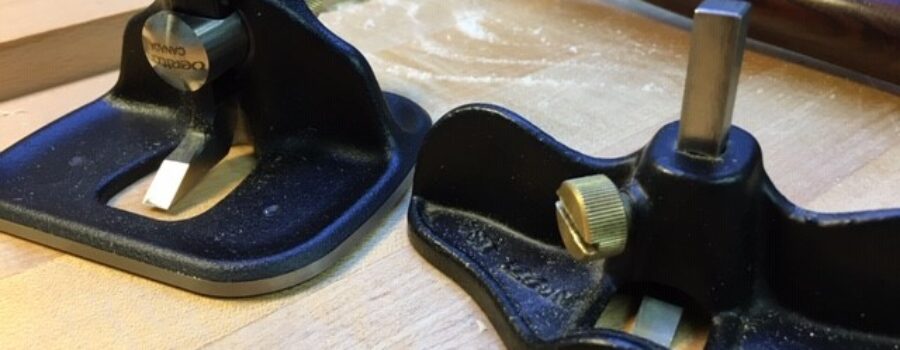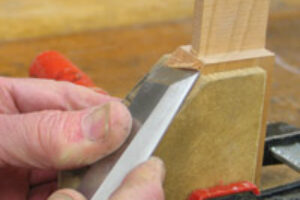It might not seem like it when it’s happening, but it’s good to be challenged occasionally (or perhaps, not quite so occasionally!) It doesn’t really matter what form this challenge takes, it could be a physical challenge, a challenge of your skills or perhaps a challenge of your long held views or opinions on how things should be done. The latter is something that happened quite regularly when I was writing my articles for British Woodworking magazine. You know that endearing thing that children do when you tell them something and their standard response is “Whyyyyyy?” usually with a delightful whiny tone? Well, this was one of Nick Gibbs’ standard responses (although not always with the whine) when I explained how I cut a joint or used a tool, or did anything else wood related, for that matter. When I first started writing for Nick, this behaviour of constantly questioning things could be pretty irritating, but I quickly realised the value of this approach to all sorts of woodworking habits, having someone question why something is done in a particular way could, and often did, help to improve the way I worked. Just because people have been doing something a particular way for many years doesn’t necessarily mean that they’re right, but you have to remember that they’re not necessarily wrong either, and it should all be balanced with the thought that there can be many ways of skinning cats!
I say all this, not because I want you to start doubting the validity of everything that you do, this might result in a visit from the men in white coats, but I do encourage you to have an open mind and the confidence to try new ideas and new methods of working.
Which leads me to the, ‘Jack of all Trades?’ question. The plane that I have always reached for first, my main weapon whenever indulging in the gentle art of making components for all things woody, has always been my trusty 5 ½ “Jack Plane”. Why? Well it’s what I’ve always done! It’s what I was told to use when I was training, I didn’t ever question it. It’s a ‘Jack’ plane after all, the ‘Jack of all Trades’ of the bench plane world, which makes it the obvious choice for doing just about everything, doesn’t it? At which point I sense the unmistakable tones of Mr Gibbs saying ‘Whyyyyyy?’ in my ear, and I feel I have to try to justify this behaviour, bearing in mind that the ‘it’s what I’ve always done’ answer, very definitely isn’t going to hold much water. Being a ‘Jack (of all trades) Plane’ definitely seems to infer that it’s going to be able to do many things, but is it actually just a one trick pony that is of a manageable size and weight, making it the plane that is (was) habitually used for most general planing duties but is actually ‘master of none’, or precious few, of them? And if it’s not much good at doing many different things, is there a plane available that is?
OK – so what are the strengths of a No. 5 ½ (or a No. 5) bench plane? If we’re considering a Stanley or a Record ‘Bailey’ pattern plane, apart from the fact that it ‘looks the part’ and the ‘bevel-down’ orientation means that the blade, perched on the rather oddly named ‘frog’, sticking up at a jaunty 45 degrees, gives a convenient place to nestle your fore-finger, whilst the rest of your fingers wrap themselves around the rear handle, strengths seem to be rather thin on the ground.
· Adjusting the mouth opening is a right old palaver, although rather better on a ‘Bedrock’ bench plane.
· Generally you’re stuck with a cutting angle of 45 degrees, (Common Pitch), unless, for instance, you have a Lie-Nielsen with an optional high-angle frog.
· Common Pitch is not great for dealing with end-grain.
· Common Pitch is not great for dealing with difficult timber that’s tearing out.
· Every time you sharpen you have to remove and then re-adjust the chip-breaker.
· The Stanleys and Records have frogs that are rather precariously perched on the main casting with 4 small areas of (potential) contact, not a particularly solid platform for the blade to sit on (although much better on a ‘Bedrock’ plane)
So their main strengths seem to be that they look like a proper plane and if they’re tuned up, with a decent, sharp blade fitted, they’re pretty efficient at planing wood that’s not too challenging.
Any good at dealing with end grain? No!
Any good at dealing with difficult, highly figured, timber that has a tendency to tear when a plane gets anywhere near it? No!
Easy to set up? No, not really!
So not a very versatile plane at all really!
Is there a plane that is? How about a Low Angle Jack? A plane that’s really just a Low Angle Block Plane on steroids, the sort of thing that Lie-Nielsen and Veritas produce.
Now, with a ‘Bevel Up’ blade configuration the cutting angle or ‘angle of attack’ can be changed simply by changing the bevel angle of the blade – or, a more practical solution – have several blades with different bevel angles.
Assuming a 12 degree bed angle:
· 25 degree blade gives a cutting angle of 37 degrees – great for end grain
· 33 degree blade gives a cutting angle of 45 degrees – ‘Common Pitch’ great for general planing duties
· 38 degree blade gives a cutting angle of 50 degrees – ‘York Pitch’ reduces tear-out on more difficult timber
· 43 degree blade gives a cutting angle of 55 degrees – for controlling tear-out on really wild grained timber
It’s easy to set up, the mouth can be adjusted in seconds, the hugely thick blades are well supported and it works really well on a shooting board, especially if fitted with a ‘hot-dog’ handle.
Sadly there’s nowhere to put your fore-finger though, no frog! So you have to do something with this stray finger, in time, maybe you could learn to wrap it around the handle – hopefully not too challenging with a bit of practice.
So, the Low Angle Jack might actually be the ‘Jack of All Trades’ and might even be the master of more than one of them!
And while we’re on the subject of planes, is a No.4 ‘Smoothing Plane’ actually any good at ‘Smoothing’…………………………..?



